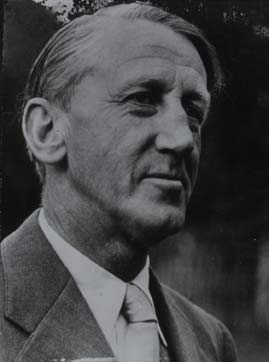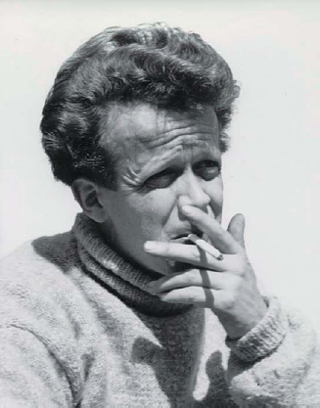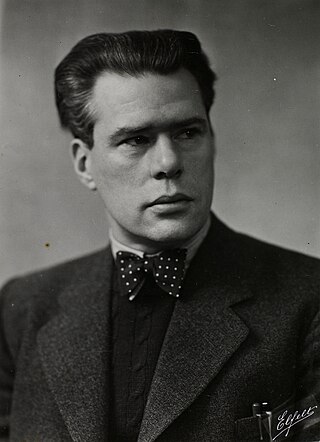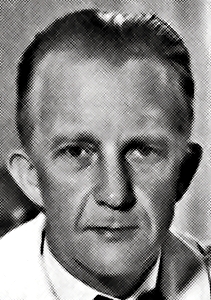Related Research Articles

Arne Emil Jacobsen, Hon. FAIA 11 February 1902 – 24 March 1971) was a Danish architect and furniture designer. He is remembered for his contribution to architectural functionalism and for the worldwide success he enjoyed with simple well-designed chairs.
Poul Kjærholm (1929–1980) was a Danish designer. Born in Østervrå, Denmark, Kjærholm began his career as a cabinetmaker's apprentice with Gronbech in 1948, attending the Danish School of Arts and Crafts in Copenhagen in 1952. In 1953, he married Hanne Kjærholm who became a successful architect. While working as a designer, he also became an educator continuing studies with Prof. Erik Herløw and Prof. Palle Suenson.
Hans Jørgensen Wegner was a Danish furniture designer. His work, along with a concerted effort from several of his manufacturers, contributed to the international popularity of mid-century Danish design. His style is often described as Organic Functionality, a modernist school with emphasis on functionality. This school of thought arose primarily in Scandinavian countries with contributions by Poul Henningsen, Alvar Aalto, and Arne Jacobsen.

Kaare Klint was a Danish architect and furniture designer, known as the father of modern Danish furniture design. Style was epitomized by clean, pure lines, use of the best materials of his time and superb craftsmanship.

Kristian Solmer Vedel was a Danish industrial designer and part of the Scandinavian Design movement.

Finn Juhl was a Danish architect, interior and industrial designer, most known for his furniture design. He was one of the leading figures in the creation of Danish design in the 1940s and he was the designer who introduced Danish modern to America.

Danish modern is a style of minimalist furniture and housewares from Denmark associated with the Danish design movement. In the 1920s, Kaare Klint embraced the principles of Bauhaus modernism in furniture design, creating clean, pure lines based on an understanding of classical furniture craftsmanship coupled with careful research into materials, proportions, and the requirements of the human body.

Børge Mogensen, was a Danish furniture designer.

Mogens Koch was a Danish architect and furniture designer and, from 1950 to 1968, a professor at the Royal Danish Academy of Fine Arts.

Niels August Theodor Kaj Gottlob, usually known as Kaj Gottlob, was a Danish architect who contributed much to Neoclassicism and Functionalism both as professor of the School of Architects at the Royal Danish Academy of Fine Arts and as a royal building inspector.

Grete Juel Jalk (1920–2006) was a Danish furniture designer. From the 1960s, she did much to enhance Denmark's reputation for modern furniture design with her clear, comfortable lines. She also edited the Danish magazine Mobilia and compiled a four-volume work on Danish furniture.
Ejner Larsen (1917–1987) was a Danish furniture designer who worked closely together with Aksel Bender Madsen.

Aksel Bender Madsen was a Danish furniture designer who worked closely together with Ejner Larsen (1917-1987) producing a wide variety of items during the Danish modern period.
Preben Juul Fabricius (1931–1984) was a Danish furniture designer who worked together with Jørgen Kastholm. During the 1960s, the pair designed a wide range of pieces for the German Alfred Kill who had a furniture factory in Fellbach near Stuttgart.
Jacob Kjær (1896–1957) was a Danish furniture designer and cabinetmaker.
Frits Henningsen (1889–1965) was a Danish furniture designer and cabinet maker who achieved high standards of quality with exclusively handmade pieces.
Peder Moos was a Danish furniture designer and cabinetmaker who crafted nearly all his pieces himself.
Rigmor Andersen was a versatile Danish designer, educator and author. Above all she is remembered for maintaining the traditions of Kaare Klint's furniture school at the Royal Danish Academy of Fine Arts.

Poul M. Volther was a Danish furniture designer who is remembered above all for his iconic Corona Chair. He succeeded Børge Mogensen as artistic director of FDB Møbler in 1950.
Carl Hansen & Søn is a family-owned Danish furniture company based on the island of Funen. Carl Hansen & Søn is the company behind many classical furniture designs by leading figures of the Danish modern movement but the company is also collaborating with contemporary designers. Knud Erik Hansen, its current owner and CEO, is the grandson of the founder.
References
- 1 2 3 "Jørgen Gammelgaard", Den Store Danske. (in Danish) Retrieved 9 November 2011.
- ↑ "Jørgen Gammelgaard" Archived 2012-04-25 at the Wayback Machine , The Schiang Collection. Retrieved 9 November 2011.
- 1 2 "Jørgen Gammelgaard (1938 - 1991)", Pandul. (in Danish) Retrieved 9 November 2011.
- ↑ "Jørgen Gammelgaard", Moebelbasen.dk. Retrieved 9 November 2011.
- ↑ "Jørgen Gammelgaard" Archived 2012-04-25 at the Wayback Machine , Sorø Stolefabrik. (in Danish) Retrieved 9 November 2011.